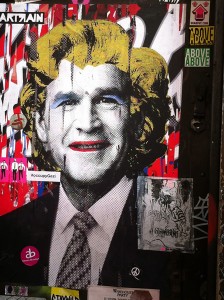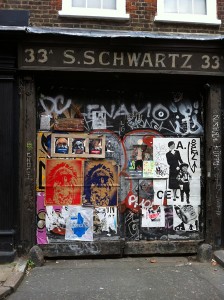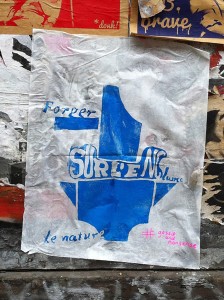Following fly-posting and Berlin and Savannah, GA (see previous posts), the time had come to take Dominic Hills’s prints inspired by French Renaissance obscenities and ‘excessive language’ to the streets of London, including Brick Lane, which has become a mecca of sorts for street art.
Here we see an old favourite, the ‘donjon d’amour’ (dungeon of love) next to a couple of heads of state.
‘Forger sur l’enclume de nature’ (to forge on nature’s anvil) made its first appearance:
The street as art gallery allows for all kinds of happy connections between the street and the art (the picture to the left reminds us of Montaigne’s criticism of sixteenth-century graffiti: ‘those enormous pictures that boys spread about the passages and staircases of palces. From these, women acquire a cruel contempt for our natural capacity’ [‘ces enormes pourtraicts que les enfans vont semant aux passages et escalliers des maisons Royalles. De là leur vient un cruel mespris de nostre portée naturelle’, ed. Villey/Saulnier, III, 5, 860]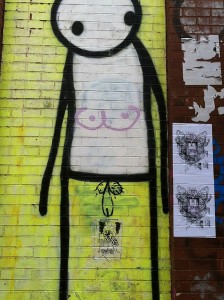 ):
):
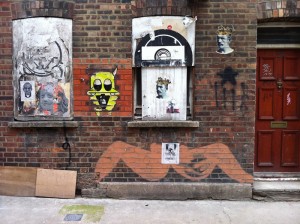 There are lots of other examples in the Gallery.
There are lots of other examples in the Gallery.
On the same day as the fly-posting we had a project outing to the terrific exhibition at the British Museum, ‘Shunga: Sex and Pleasure in Japanese Art’. Shunga are variously explicit, beautiful, erotic, pornographic, humorous and irreverent, and they thereby form a perfect if unexpected combination with similarly comic yet highly elaborate obscenities of the French Renaissance. These worlds come together in Dominic Hills’s prints, to produce street art like no other.


